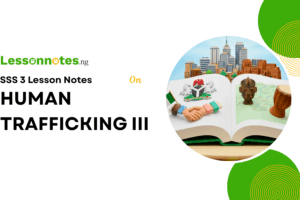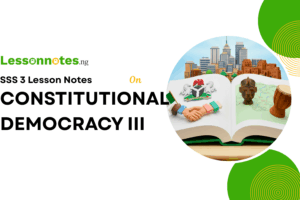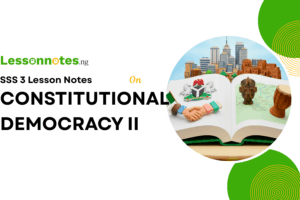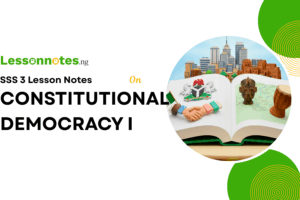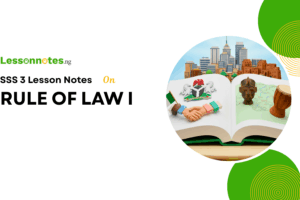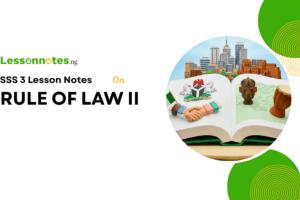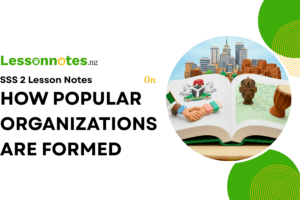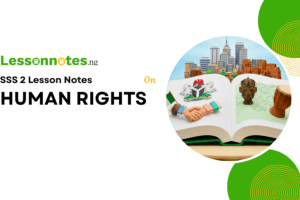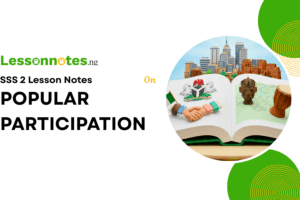Pillars Of Democracy – The Constitution SS1 Civic Education Lesson Note
Download Lesson NoteTopic: Pillars Of Democracy – The Constitution
Introduction
Pillars of democracy are the human and non-human factors that contribute to the smooth running of democratic processes in a given democratic system.

CONSTITUTION
The constitution is the fundamental laws, rules, regulations and other related elements according to which democratic states are expected to be governed. It can also be defined as a book or document that contains the rules and principles by which a state is governed. It is a body of fundamental principles or established precedents according to which a state or other organization is acknowledged to be governed. The constitution of a country dictates how power is shared among the arms of Government and the rights and duties of citizens in the country.
Sources of Constitution
The main sources of the Nigerian Constitution include the following:
- History of the people
- Decrees
- Convention
- The customs of the people
- Acts of parliament
Constitution As A Major Pillar Of Democracy
Constitutions can be regarded as a pillar of democracy because of the following functions they perform in a country
- It sets the limit of power of the use of powers of Government
- It protects the rights of the minority
- The constitution defines the right and power of the Government
- It helps to share power among the arms of the Government
- It also spelt out political institutions, party systems, tenure of office of Government, etc.
- The constitution protects the rights of the minority
- It reflects the sovereign will of the people.
- Lay down the aims, objectives, values and goals which the people want to secure.
- It contains a description and guarantee of the fundamental rights of the people
- Lay down the aims, objectives, values and goals which the people want to secure.
- It gives a detailed account of the organization of the government. The organization, powers and functions of its three organs of the and their interrelationship.
- In a federation, the Constitution lays down the division of powers between the central government and the governments of the federating states/provinces. It is binding upon both the centre and the state governments.
- It specifies the power and method of amendment of the Constitution.
- The constitution governs all and no one can violate its rules.
- It lays down the election system
- It provides for the independence of the judiciary and the rule of law.


